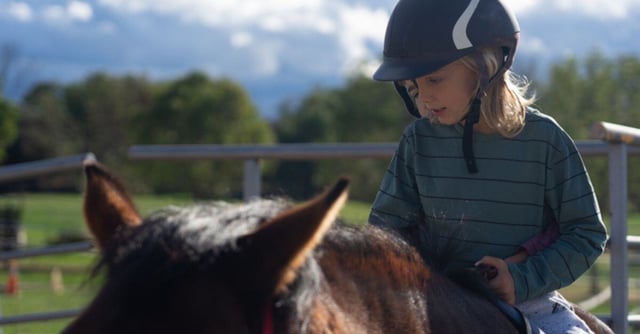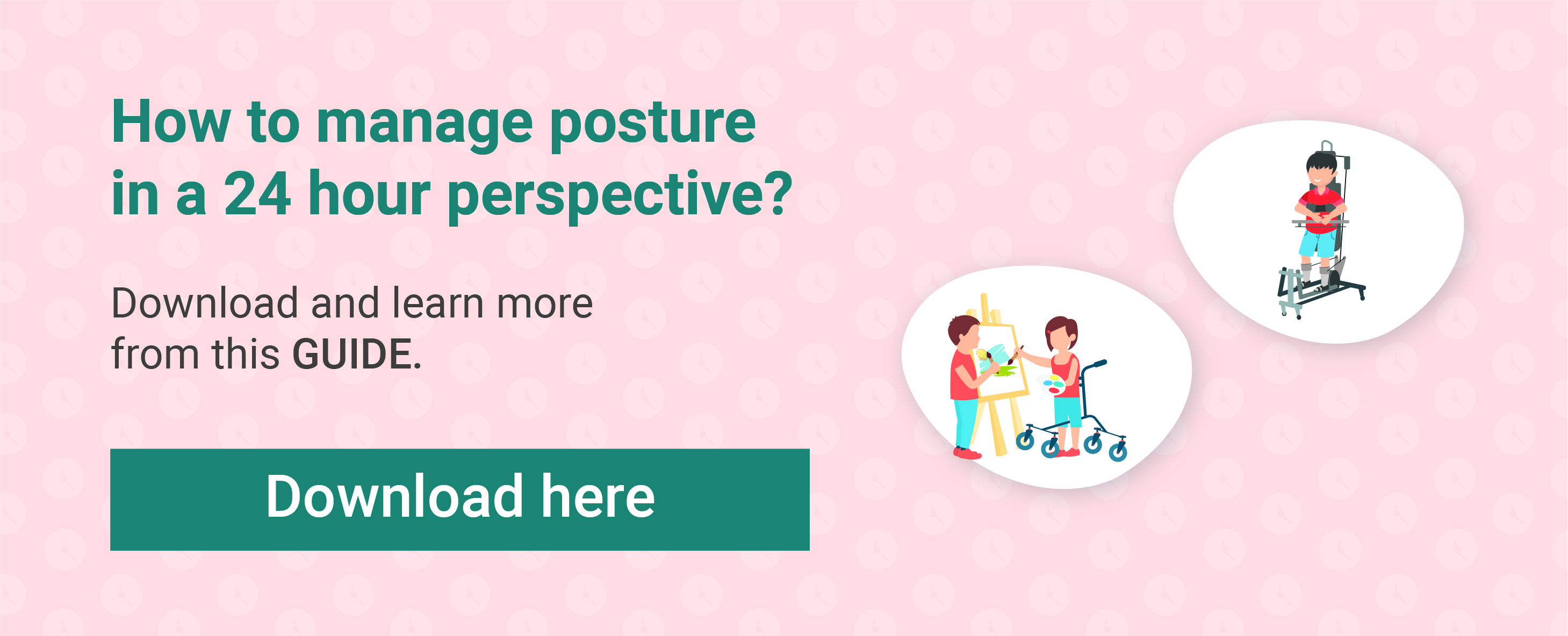
Feb 20, 2025What is hippotherapy?

Back to Blog Overview
If you’re looking for a unique and effective way to support your child’s physical, emotional, or cognitive development, you may have heard about hippotherapy. But what exactly is it, and how can it help your child?
In this article you can read about:
- What is Hippotherapy?
- Why is it called Hippotherapy?
- Who is Hippotherapy for?
- What are the benefits of Hippotherapy?
- What is the background of a Hippotherapist?
- Is Hippotherapy safe for my child?
- How do I access Hippotherapy for my child?
What is Hippotherapy?
Hippotherapy is a therapeutic approach that utilises the movement of a horse to assist children (and adults) with various challenges, such as physical disabilities, neurological conditions, or sensory processing issues. The word "hippotherapy" comes from the Greek word "hippos," which means horse, and "therapy," meaning treatment. So, it literally means "treatment with the help of a horse."
This therapy does not involve teaching individuals how to ride a horse. Rather, it’s about using the horse’s natural, rhythmic movements to help your child improve their balance, coordination, strength, and even communication skills. The horses movement is carefully controlled by a trained therapist to create specific physical and sensory input that can benefit your child.
Why is it called Hippotherapy?
The name highlights the central role of the horse in this therapy. Horses have a unique way of moving that mimics the human walk. This movement helps stimulate your child’s muscles, nervous system, and even their brain in ways that are hard to achieve with traditional therapy methods. The horse’s three-dimensional movement—forward and backward, side to side, and up and down—engages your child’s core muscles and helps them develop better balance and coordination.
Interestingly, an average horse walks at a rate of approximately 100 steps per minute. This means that sitting on a horse walking for 5 minutes provides 500 neuromotor inputs to your child. A typical therapy session lasts around 25 minutes, representing a total of 2500 neuromotor inputs!
Who is Hippotherapy for?
Hippotherapy is typically used as a method within treatment of individuals with congenital or acquired disease/disabilities that cause movement, balance and coordination difficulties, or individuals with physical or cognitive impairments. It can be used for people with diagnoses such as:
- Cerebral palsy
- Muscle diseases
- Rett syndrome
- Traumatic brain injury
- Spinal cord injury
- ADHD
- Autism
What are the benefits of Hippotherapy?
Hippotherapy can offer a wide range of benefits for children. Here are some of the key benefits:
- Physical Benefits: Hippotherapy can improve muscle tone, balance, coordination, and posture. Often it is also seen that the child develops better core strength and flexibility.
- Sensory Integration: The rhythmic and repetitive motions of horseback riding can enhance sensory processing and integration, beneficial for individuals with sensory processing disorders.
- Emotional and Psychological Benefits: Interacting with horses can promote emotional well-being, reducing anxiety and improving mood. The bond between the rider and the horse can help build confidence and self-esteem.
- Social Skills: Group hippotherapy sessions provide social interaction opportunities, helping improve communication and interpersonal skills among participants.
- Therapeutic Benefits: The environment of hippotherapy can create a calming experience, which may aid in the therapy of conditions such as autism, cerebral palsy, and other developmental disorders.
- Engagement and Motivation: Many children find horseback riding enjoyable, making it a motivating form of therapy that encourages participation and engagement.
What is the background of a Hippotherapist?
Hippotherapy is led by highly trained professionals. Here’s what you need to know about the qualifications of a hippotherapist:
- Therapy Background: In the UK Hippotherapists are already licensed physical therapists, occupational therapists or speech and language therapist This means they have extensive training in treating children with physical, sensory, or communication challenges.
- Specialised Training: In addition to their therapy license, hippotherapist’s have undertaken a reconised advancing practice in Hippotherapy qualification.
- Experience with Horses: Hippotherapists also need to understand horses—how they behave, how to handle them, and how to keep them calm and safe during therapy sessions.
- Teamwork: A hippotherapist doesn’t work alone. They’re part of a team that includes a horse handler and sometimes others who assist the child during the session.
Is Hippotherapy safe for my child?
As a parent, your child’s safety is your top priority. The good news is that hippotherapy is generally very safe when done by trained professionals in a controlled environment. Here’s what makes it safe:
- Trained professionals: Every session is led by a certified hippotherapist who knows how to manage risks and adapt the therapy to your child’s needs.
- Safety equipment: Your child will wear a helmet and may use a safety belt or other equipment to prevent falls or injuries.
- The right horse: Therapy horses are specially chosen for their calm temperament and smooth movement. They’re also regularly evaluated to make sure they’re a good fit for therapy work.
- Individualised sessions: The therapist will tailor each session to your child’s abilities and goals. They’ll closely monitor your child’s response to the horse’s movement and adjust as needed.
- Risk awareness: While rare, there are some risks, such as falls or allergic reactions. However, therapists are trained to handle these situations and prioritize your child’s safety at all times.
How do I access Hippotherapy for my child?
Your child can be referred to Hippotherapy from you as parent or healthcare professionals, education professionals and guardians. The therapist conducting equine activities will typically perform an initial assessment of your child to establish goals and a treatment plan.
To find a therapist near you offering Hippotherapy, we encourage you to visit the website of “The Association of Chartered Physiotherapists in Equine Activities (ACPEA)” who holds the directory for qualified physiotherapists practicing in the UK and Ireland: https://acpea.org/
Note! Access to Hippotherapy differ from country to country and if you are not living in the UK & Ireland, we encourage you to contact your child’s therapist to find out how you can access Hippotherapy for your child.


Rikke Damkjær Moen brings many years of experience as clinical physiotherapist to the Made for Movement team. Her mission is to ensure that everybody, regardless of mobility problems, should be able to experience the joy and health benefits of physical activity. As our Medical Manager, Rikke is passionate about sharing knowledge so that individuals with special needs, families, and clinicians can discover the possibilities and solutions provided by Made for Movement.

